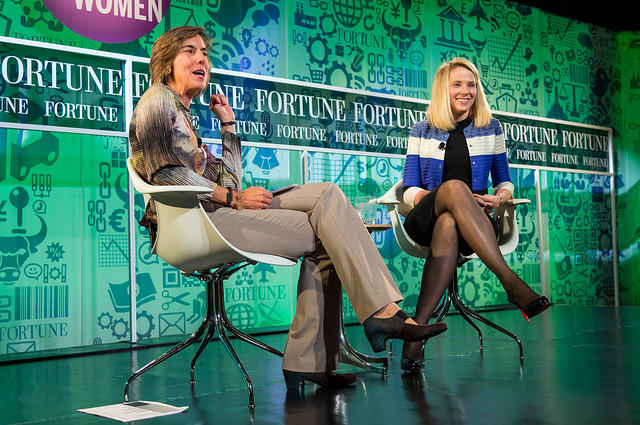Section Branding
Header Content
Study Says Female CEOs Face Unique Form Of Sexism
Primary Content
On the rare occasion a woman shatters that glass ceiling and makes it to the boardroom as chief executive officer, she still may have to contend with a form of sexism — especially when the board of directors is made up of men.
The problem comes from the traditional role of women in men’s eyes, according to a study published in Strategic Management Journal.
LISTEN TO THE FULL INTERVIEW:
The study, co-authored by University of Georgia doctoral candidate Abbie Oliver, suggests board chairs are more likely to want to collaborate with a female executive, whereas they’d want to oversee and control a male CEO.
“The reason for this is that the female gender stereotype is more consistent with the model of man assumed by stewardship theory — cooperative, collectivistic, and trustworthy,” the study says.
Oliver told GPB’s Rickey Bevington that one of the reasons she and her co-authors are studying the role of gender in CEOs is because for the first time, they can.
“More men named John run big companies than all women,” Oliver told Bevington. “In fact, 5.3 percent of companies are run by Johns, 4.5 percent of companies are run by Davids and only 4.1 percent of our large companies are run by women.”
The study used data from 523 U.S. firms over the course of 10 years. They used documents filed with the Securities and Exchange Commission to gauge whether the board chair-CEO relationships were oriented toward collaboration or control.
But what happens in those boardrooms isn’t overtly aggressive.
Instead of men throwing a coat over a puddle so a woman can walk across without splashing her shoes, board chairs are more likely to do something like give a female CEO less work so she can make it home to her family.
“It's rooted in thinking of females and their traditional communal role as a mother and the thought that they need to be held on this pedestal to be protected,” Oliver said.
The idea, she told Bevington, is that “men are bad but bold and women are wonderful but weak.”
Oliver also says the more women are on a board the more all stereotypes dissipate.
Men are often cast as opportunistic shirkers who are more likely to engage in scandalous behavior and embarrass the company if not monitored and disciplined by the board.
When women make up more of the board, these stereotypes lessen as well as the benevolent assumptions that women need more protecting, Oliver said.
The key takeaway from the study is awareness. When people realize their biases, they can work to overcome them.
Being able to draw a line between behaviors in the workplace versus in social or public settings makes all the difference.
“You don't need to stop holding a door for a female,” Oliver told Bevington.
But don’t single women out or apologize for something you would do at work with men but not with women, such as telling a dirty joke.
The woman may prefer to take the joke in stride and be part of the team, Oliver said.
Oliver’s co-authors on the study “BS in the Boardroom: Benevolent Sexism and Board Chair Orientations” are Ryan Krause of Texas Christian University, John Busenbark of the University of Georgia, and Matias Kalm of Arizona State University.



